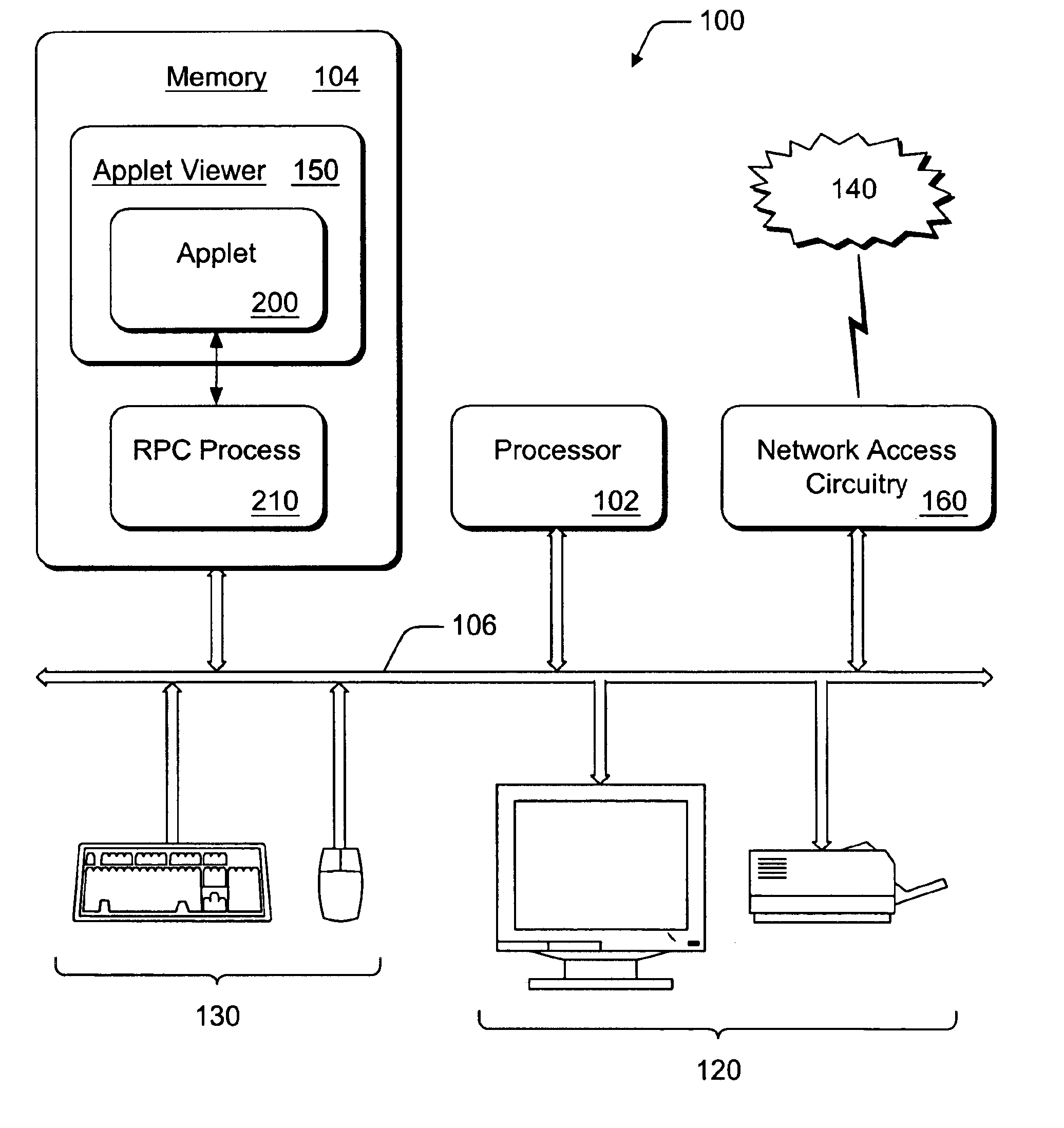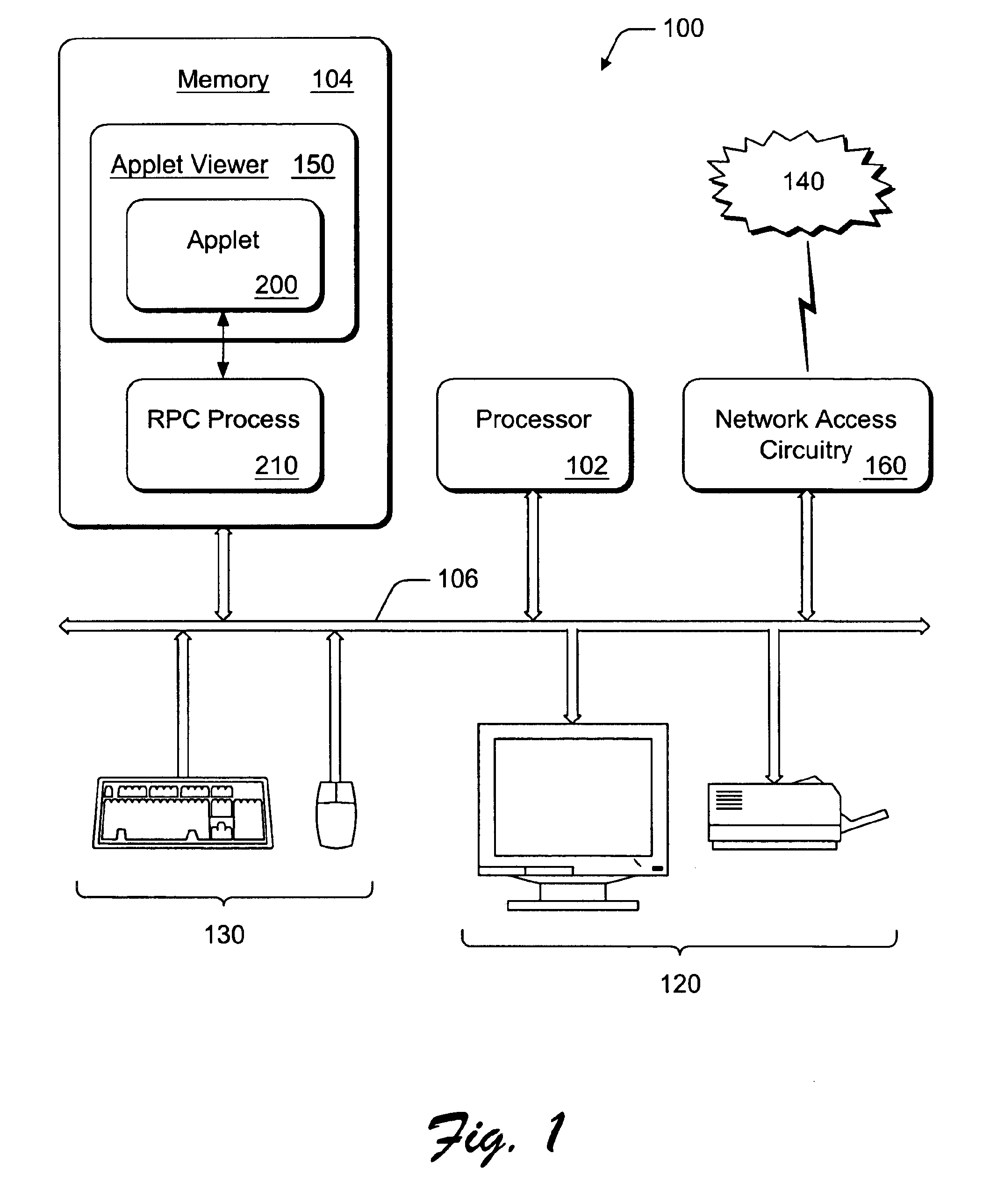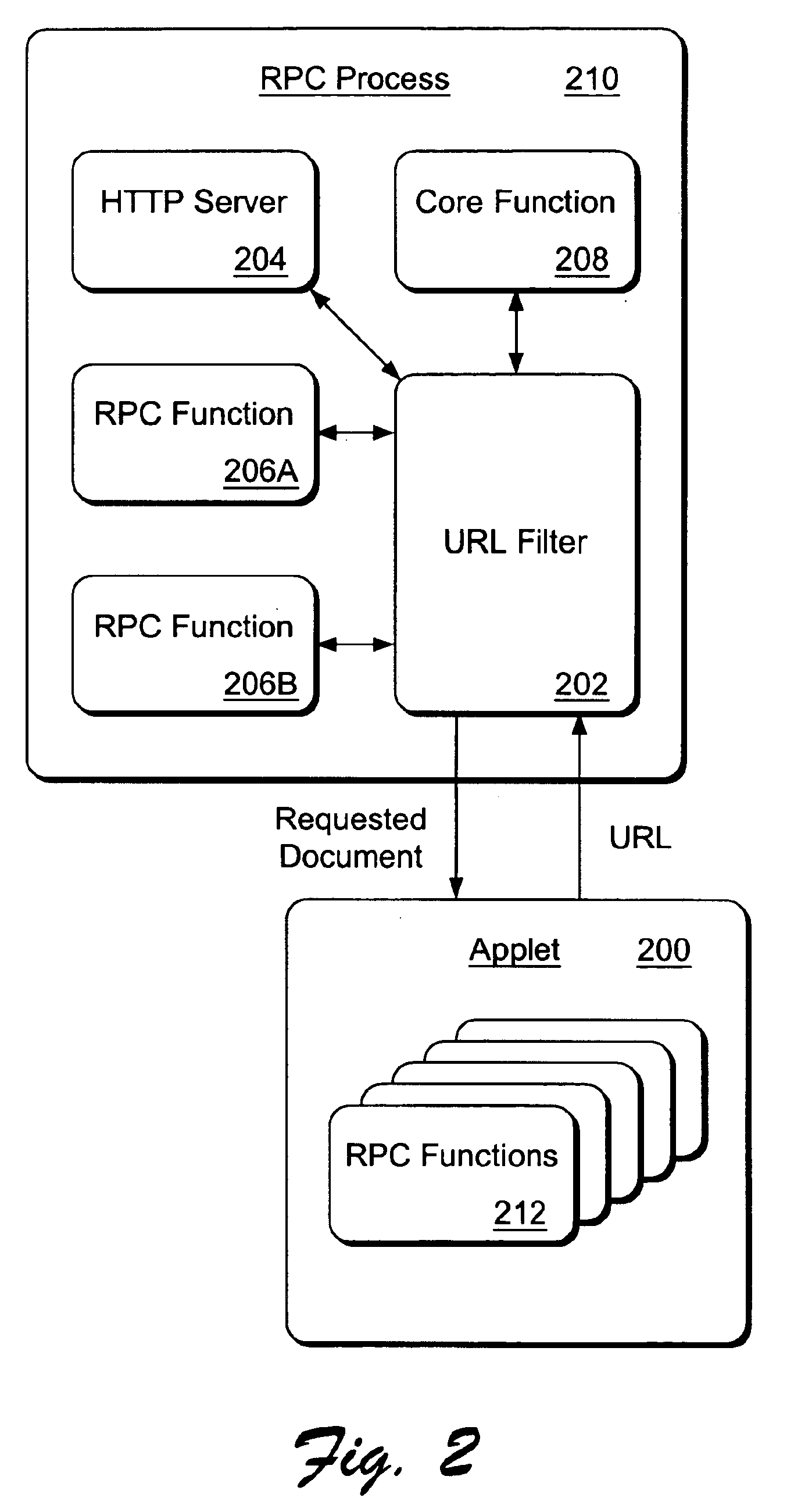Interprocess communication mechanism for heterogeneous computer processes
a heterogeneous computer and communication mechanism technology, applied in the field of computer software, can solve problems such as affecting the security of local computer systems, harming local computer systems, and erasing the contents of persistent storage devices, so as to achieve the effect of compromising the security of the computer system
- Summary
- Abstract
- Description
- Claims
- Application Information
AI Technical Summary
Benefits of technology
Problems solved by technology
Method used
Image
Examples
Embodiment Construction
In accordance with the present invention, remote procedure calling (RPC) requests are encoded as requests for documents in a known, standard document request format, such as an hypertext transfer protocol (HTTP) universal resource locator (URL). A portion of the name space for documents which can be retrieved in HTTP is reserved for RPC requests. An applet 200 (FIG. 1) encodes an RPC request as a request to receive a document in the portion of the name space reserved for RPC requests and sends the URL to an RPC process 210. RPC process 210 receives the URL and determines that the URL specifies a document in the name space portion reserved for RPC requests and parses the RPC request from the URL and services the RPC request. In addition, RPC process 210 places any results produced by servicing the RPC request into a document which is then sent to applet 200. In this way, applet 200 communicates RPC requests to RPC process 210 in a manner generally permitted by applet viewer 150 withi...
PUM
 Login to View More
Login to View More Abstract
Description
Claims
Application Information
 Login to View More
Login to View More - R&D
- Intellectual Property
- Life Sciences
- Materials
- Tech Scout
- Unparalleled Data Quality
- Higher Quality Content
- 60% Fewer Hallucinations
Browse by: Latest US Patents, China's latest patents, Technical Efficacy Thesaurus, Application Domain, Technology Topic, Popular Technical Reports.
© 2025 PatSnap. All rights reserved.Legal|Privacy policy|Modern Slavery Act Transparency Statement|Sitemap|About US| Contact US: help@patsnap.com



